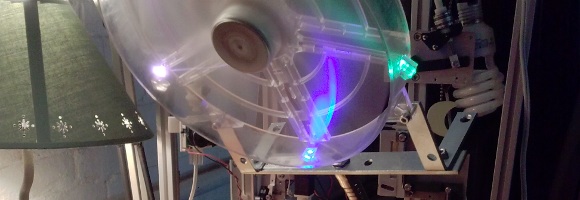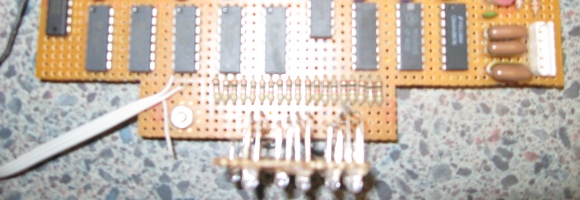There was a third-party multiplayer upgrade pack for one of the Quake games back in the ’90s that included a whole slew of non-standard weapons. Among them one of the most memorable was a gravity well, that when thrown into the middle of a crowded room full of warring players would suck them into a vortex. Assuming its user had made it to safety in time, they would then be left the victor. The hyper-violent make-believe world of a first-person shooter is probably best left in a Pentium server from the ’90s, with few direct parallels in the real world. Maybe laser tag, or Nerf battles, are the closest you’ll get.
If you are a Nerf enthusiast, then you’ll appreciate [Giaco Whatever]’s CO2-powered remote-control Nerf bomb as an analogue of that Quake gravity well. It fires twelve darts at the press of a button on an infra-red remote control. The firing tubes sit in a nicely machined manifold connected via a solenoid valve to a little CO2 gas bottle. In the hectic world of a Nerf war it is slid out into the field of combat, its operator takes cover, and the other participants are showered in foam darts. There are probably kids who would sell their grandparents to own this device.
The build is detailed in the video below the break, along with a wonderfully tongue-in-cheek movie segment demonstrating it in action.




 [Arvind] graduated from one of the finest engineering schools in India, the Indian Institute of Technology in Kanpur, and joined the TATA conglomerate at their heavy-vehicles plant helping build trucks. It didn’t take him long to realize that he wasn’t cut out to be building trucks. So he took a year off and enrolled in a village science program which was working towards changing the education system. At the weekly village bazaar, he came across interesting pieces of arts and crafts that the villagers were selling. A piece of rubber tubing, used as the core of the valve in bicycle tubes, caught his eye. He bought a length and a couple of matchboxes, and created what he calls “matchstick Meccano”.
[Arvind] graduated from one of the finest engineering schools in India, the Indian Institute of Technology in Kanpur, and joined the TATA conglomerate at their heavy-vehicles plant helping build trucks. It didn’t take him long to realize that he wasn’t cut out to be building trucks. So he took a year off and enrolled in a village science program which was working towards changing the education system. At the weekly village bazaar, he came across interesting pieces of arts and crafts that the villagers were selling. A piece of rubber tubing, used as the core of the valve in bicycle tubes, caught his eye. He bought a length and a couple of matchboxes, and created what he calls “matchstick Meccano”.
















